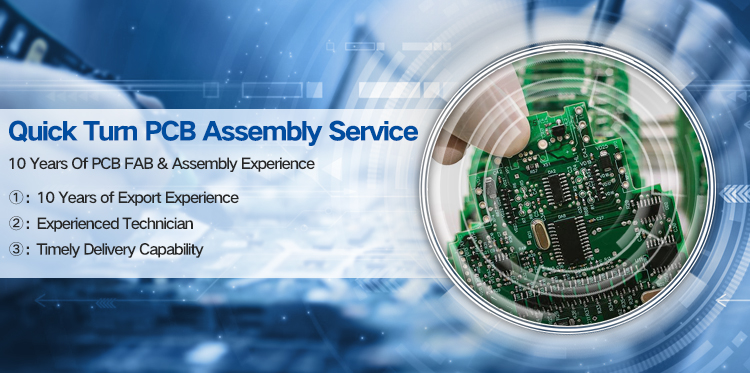When designing an electronic product or circuit, one of the fundamental decisions you will face is choosing the type of printed circuit board (PCB) to use. Two common options are double-sided PCB and single-sided PCB. While both have their own pros and cons, making the right choice can ensure successful project execution. In this blog, we will take an in-depth look at the characteristics of double-sided PCBs and single-sided PCBs to help you make an informed decision.
Double sided PCB.
Double-sided PCBs feature copper traces and components on both sides of the board, interconnected by vias or plated through holes. These vias act as conductive tunnels, allowing signals to pass through different layers of the PCB, making it more compact and versatile. These boards are commonly used in complex electronic devices such as smartphones, computer hardware, and high-density applications.
Advantages of double-sided PCB.
1. Increased component density: Double-sided PCBs can accommodate more components, providing a higher level of functionality in a compact size. This is critical when designing complex electronic systems.
2. Enhanced wiring capabilities: With copper traces on both sides of the board, designers have more wiring options, reducing the chance of signal interference and crosstalk. This improves signal integrity and overall performance.
3. Cost-Effectiveness: Despite its complexity, double-sided PCBs are cost-effective due to their widespread use and availability. They can be efficiently produced at scale, making them a viable option for large-scale projects.
Disadvantages of double-sided PCB
1. Design complexity: The complexity of double-sided PCB makes the design process more complicated, requiring complex software and experienced designers. This drives up the overall development cost of the project.
2. Soldering challenges: Since components exist on both sides, soldering can be more challenging, especially for surface mount technology (SMT) components. Extra care is required during assembly to avoid short circuits and defects.
Single sided PCB
On the other hand, a single-sided PCB is the simplest form of PCB, with components and copper traces present on only one side of the board. These types of PCBs are typically used in less complex applications such as toys, calculators, and low-cost electronics.
Advantages of single-sided PCB
1. Easy to design: Compared with double-sided PCB, single-sided PCB is relatively easier to design. The simplicity of the layout speeds up prototyping and reduces design time.
2. Reduce development costs: Single-sided PCBs are cost-effective with fewer copper layers and simplified designs, making them ideal for low-budget projects or projects with limited functional requirements.
3. Easier welding process: All components are on one side, welding becomes simpler, very suitable for DIY enthusiasts and amateurs. Additionally, the reduction in complexity simplifies troubleshooting.
Disadvantages of single-sided PCB
1. Space Constraints: A significant limitation of single-sided PCBs is the limited space available for components and routing. This limits their use in complex systems that require advanced functionality or extensive wiring.
2. Signal interference: Single-sided PCB lacks independent power layer and ground layer, which will cause signal interference and noise, affecting the performance and reliability of the circuit.
The choice between double-sided PCB and single-sided PCB depends on the complexity and requirements of the electronics project. Single-sided PCBs are suitable for simple applications with limited functionality, while double-sided PCBs provide greater flexibility, higher component density and improved routing capabilities for more complex systems. Consider factors such as cost, space requirements, and overall project goals to determine the most appropriate PCB type. Remember, proper research, planning, and consultation with an experienced PCB designer are critical to the successful execution of your project.
Post time: Nov-01-2023


